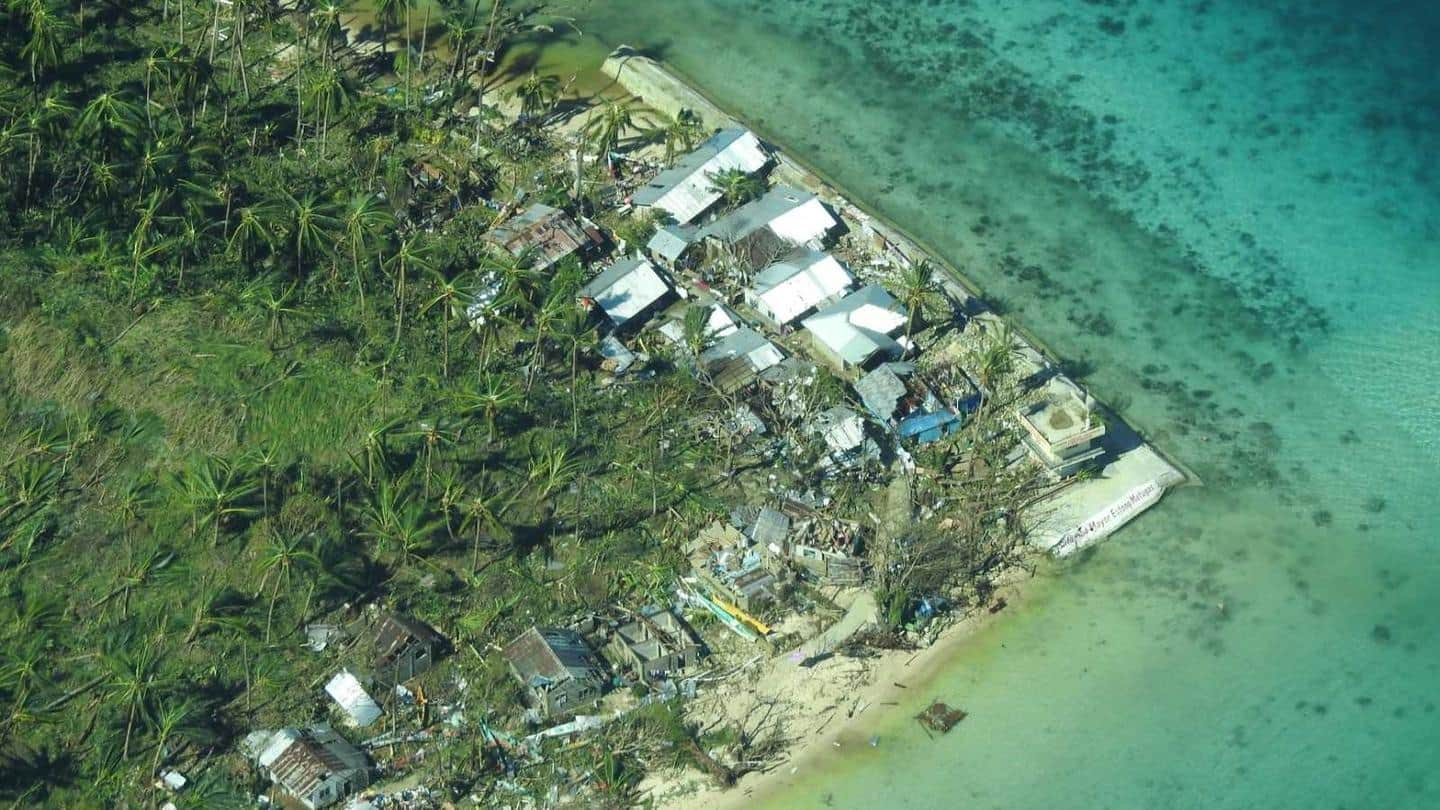
Typhoon Rai slams Philippines, over 370 dead, several missing
What's the story
After the most powerful typhoon which hit the Philippines Thursday, the death toll has soared to 375.
As many as 500 people are injured and another 56 people remain missing, the national police said Monday.
Due to damaged communications, power outages, and blocked highways, some towns and villages remain unreachable.
However, the weather has improved and repair works and clean-up operations have started.
Context
Why does it matter?
The catastrophic typhoon whirled with wind speeds reaching 195 kilometers per hour gusting up to 270 kilometers per hour.
The storm caused havoc on central island districts, displacing over 7,00,000 people, including 4,00,000 who have moved to emergency shelters.
The storm was so devastating that it caused trees and buildings to collapse and triggered landslides and flash floods.
Information
How's the rescue and repair work going?
Thousands of people were rescued by police and the coast guard in the riverside village of Loboc, which is located in the most severely affected province of Bohol. In at least 227 cities and towns, emergency teams are working to restore power and phone services.
Ground situation
'Urgent need of drinking water and food'
"Our situation is so desperate," said Ferry Asuncion, a street vendor in Surigao.
He said there is an urgent need for food and drinking water.
"There's no water anymore, there's a water shortage, on day one there was already looting in our neighborhood," said resort owner Marja O'Donnell to CNN Philippines.
Reportedly, internet and electricity were also hit in several areas.
Quote
Dinagat Islands faces brunt of Rai: Governor
On Dinagat Islands, Rai's intensity was worse than that of Typhoon Haiyan—one of the deadliest recorded typhoons—said province Governor Arlene Bag-ao.
"The wind was swirling north to south to east and west repeatedly for six hours. Some tin roof sheets were blown away," said Bag-ao.
At least 14 villagers were killed and 100 others were injured, added Bag-ao, seeking aid from the national government.
Information
Provincial officials raise other concerns
Officials of multiple provinces have addressed worries that they may run out of gasoline—in high demand as many are relying on temporary power generators.
Such generators were used for refrigerated warehouses holding coronavirus vaccines.
Officials had brought vaccine shipments in preparation for an immunization campaign that had been postponed owing to the typhoon last week.
Do you know?
Philippines prone to disasters
The Philippines is situated between the Pacific Ocean and the South China Sea. It is hit by 20 storms each year. The seismically active Pacific "Ring of Fire" passes through the Southeast Asian archipelago. Hence, it is a disaster-prone country.